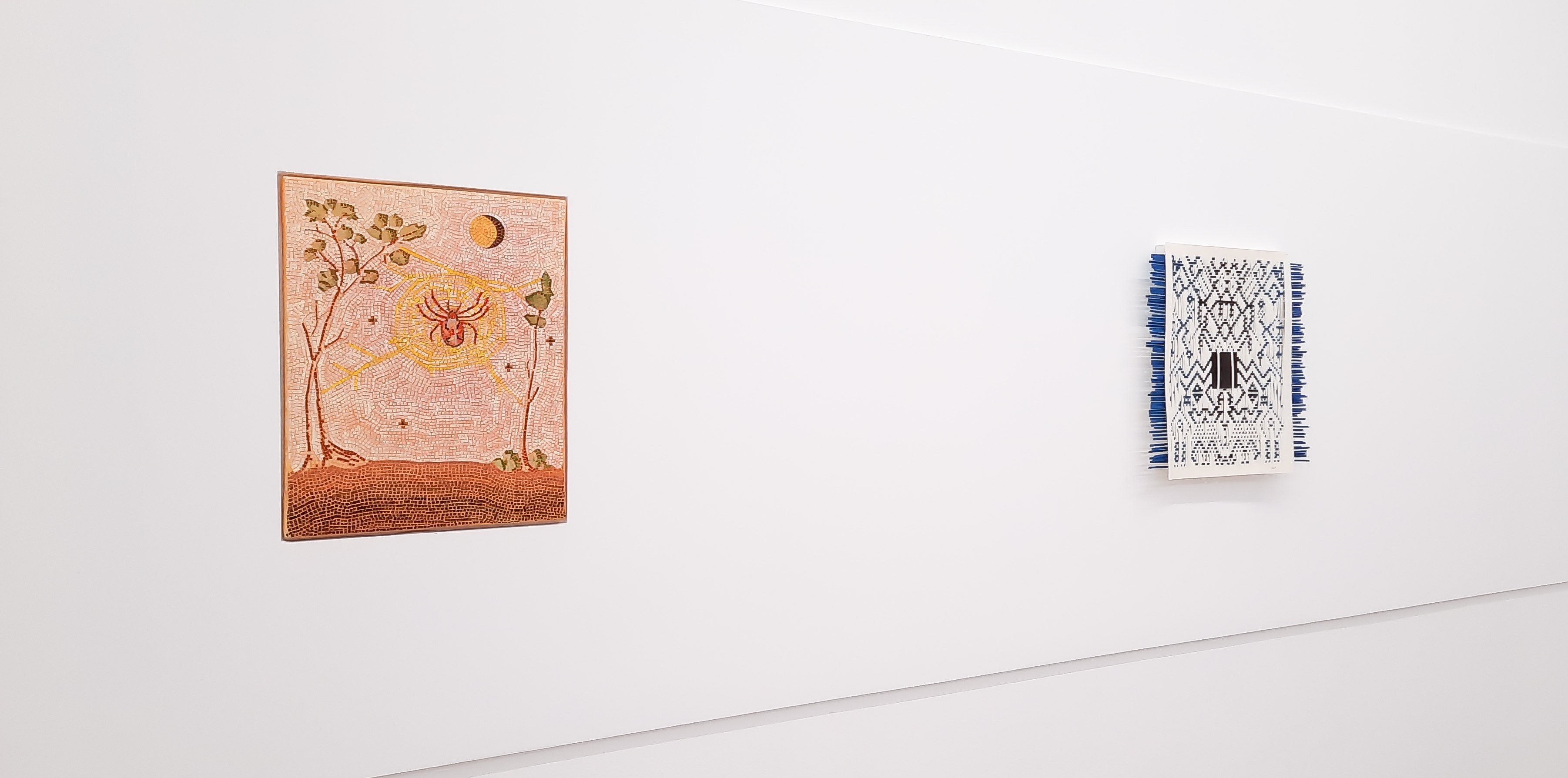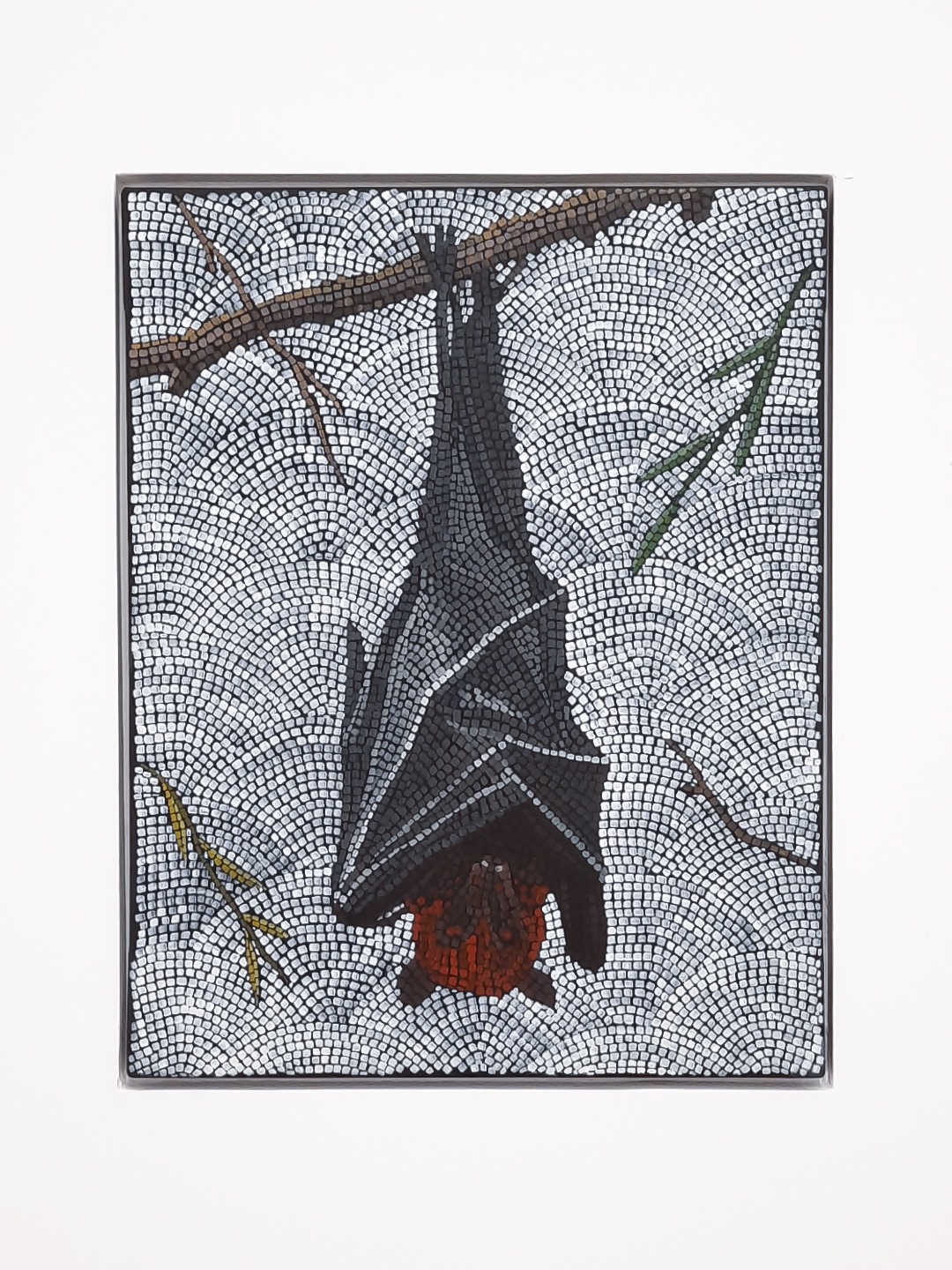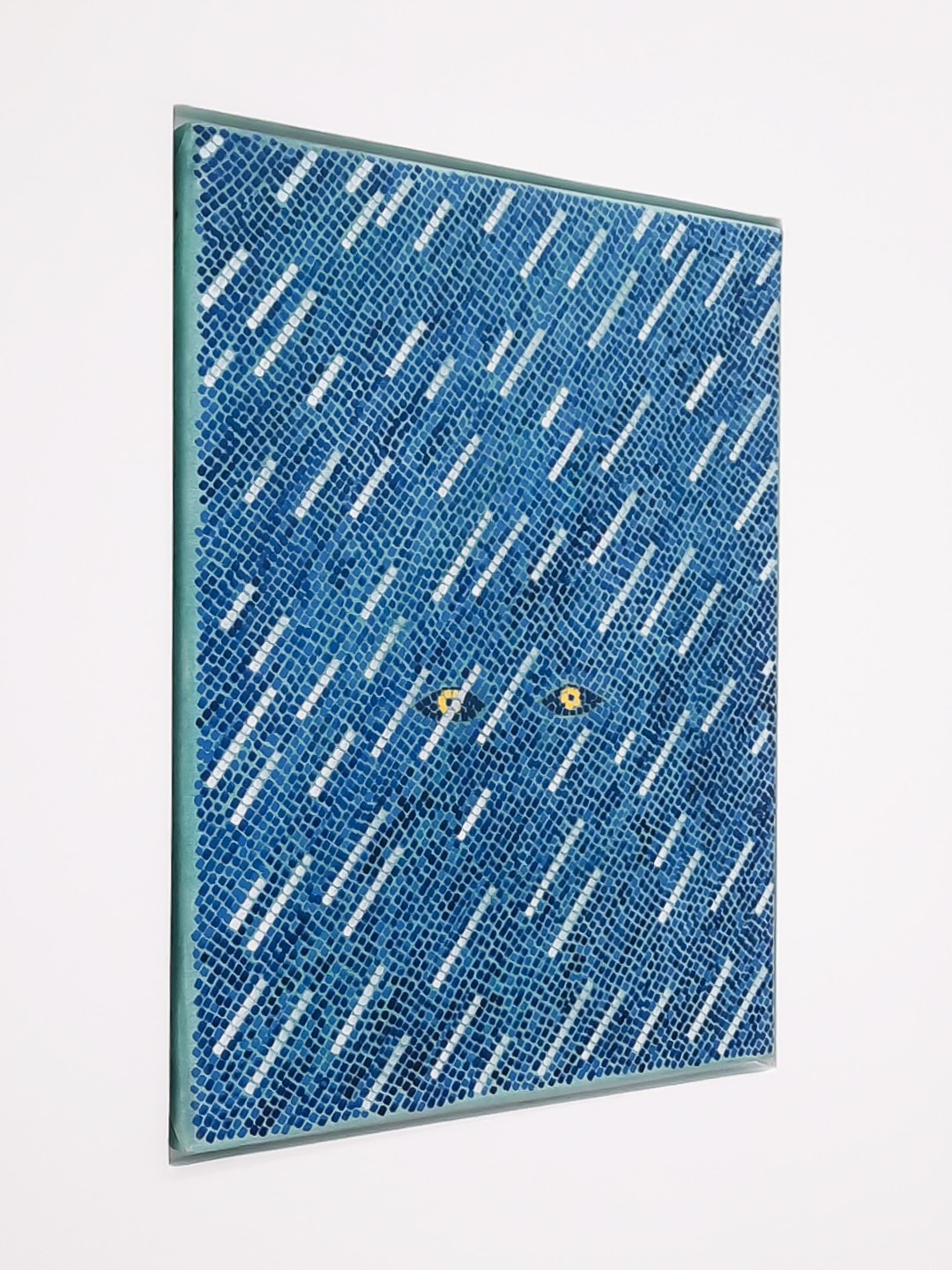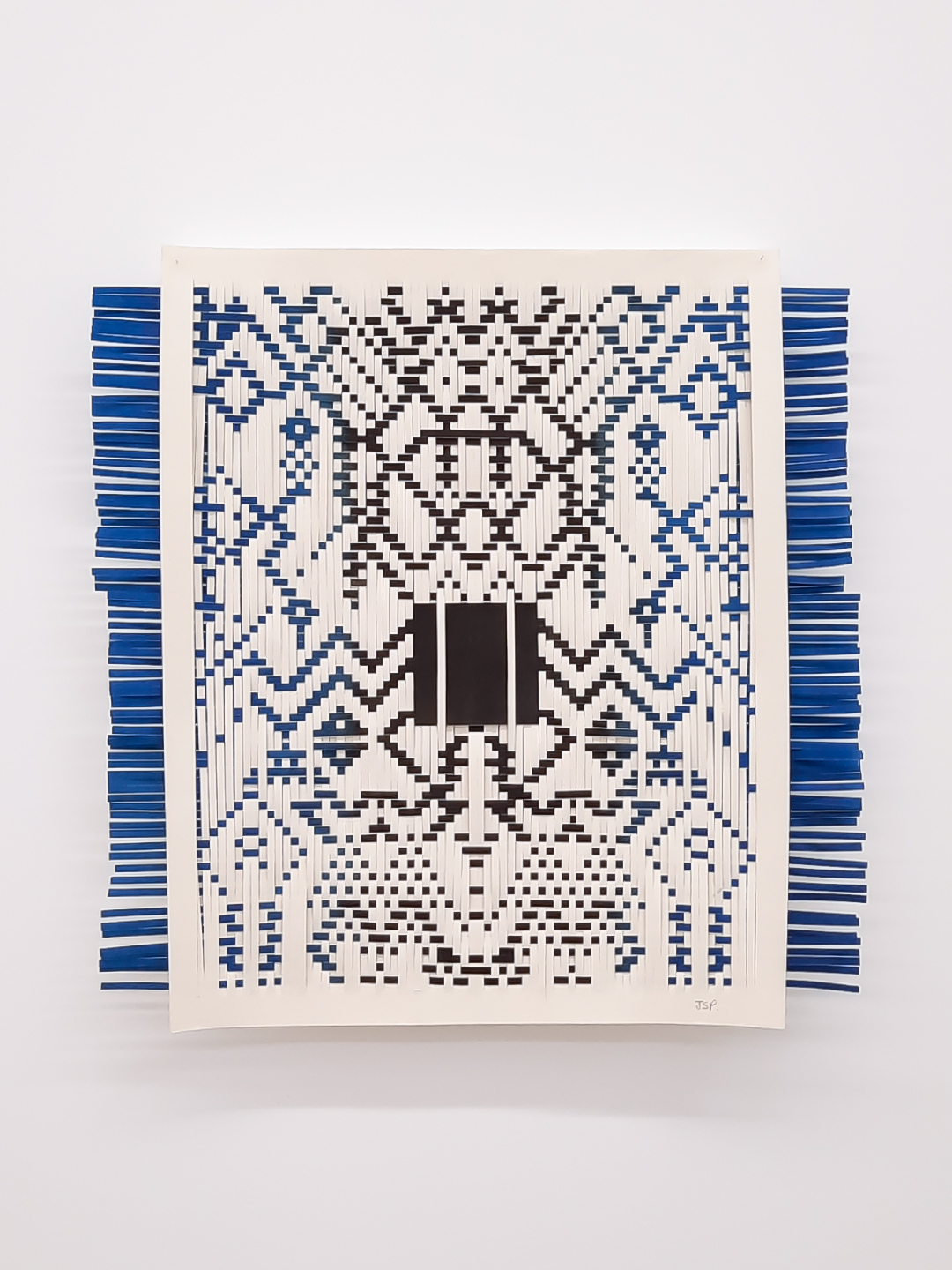
Review
Among the Shadow’s Mirages, Light Peers Out. Jimena Schlaepfer and Christian Camacho
by Ana Torres Valle Pons
Versus nº5 at Arróniz
Reading time
6 min
The encounter between those works by Jimena Schlaepfer and Christian Camacho making up the exhibition Versus 5.0 at Galería Arróniz is like a handshake between parallel artistic inquiries. In the spaces between them as well as their intersections, these works offer a unique response to relationships between consciousness, perception, time, the natural, and the human. As if it were a proper and precise reorientation system, the visual language that these artists have coined reveals a flexibilization of their media, up to the point where they achieve a kind of harmonic calm and clarity. One intuits that the pieces are the crystallization of deep contemplation, of plunges towards places of consciousness that are not properly nameable.
In Schlaepfer's amalgamation of paper texture and liquid color, as well as in the intricate manipulation of Camacho’s painting, we see unfold two different poems of minimal gestures and repetition, generating vibrant and at the same time silent images. On the one hand, Schlaepfer effects a sculptural use of paper, distorting its materiality so that it can be reconstructed as a textile. The interlacing of strips of dyed paper generates a series of geometric and rhythmic sequences with an oscillating graphic quality. Near the center of each piece, a square section of paper bearing an Indian ink drawing overlays the textile, operating as a fragment of inquisitive silence.
On the other hand, in Camacho’s pictorial mosaics there is a bidimensionality that is revealed to be deep and iridescent. Paradoxically, the mechanicity in this pictorial fragmentation makes protagonists out of the brush strokes and subtle variations of color, all in a work that never disavows the hand that created it. In each of the pieces there is a form of latticework and chromatic configuration that seems to radiate its own climates and its own laws of light within a distinctive visual atmosphere.
Turning into a Bat
Speaking of mystery contains within itself the impossibility of seeking to stabilize what resists being said and encompassed by any language. Perhaps the capricious appearance of the mysterious in view of the common can only come from a delicate exercise of delimiting space, namely as something like a door to immensity. In this work by Jimena Schlaepfer and Christian Camacho it seems that these spaces are sustained by riddles, such as in images that make clear that what is familiar to us in the visible has an enigma at its center. There’s something that remains undefined in the fraying of Schlaepfer’s pieces, like a plot that could be continued or extended. And in Camacho’s pieces there is something that generates intrigue in the images and in their capacity to reveal themselves as such.

In Camacho’s La versión del murciélago (“The bat’s version”), our gaze is confronted by an unstable quality that seems to invite us to look in another way. In a nocturnal environment of tesserae generating a lunar twilight, an inverted bat is enveloped in its own repose. Its closed eyes seem an invitation to diminish our confidence in our world’s diurnal solidity, tempting us to wonder about that non-human perception that does not look back at us. The exercise of distorting our gaze in the face of a kind of presence submerged in a glowing darkness opens up questions about perception and those layers of the world inaccessible to our sensitivity. In the limiting case, daring to become a bat, as in an oneiric transfer, would be to exist in the dark, to witness sonic forms right there in the dark, and to invert ourselves above the pearly gloom.

In Camacho’s Sin descanso (“Without rest”), there’s a reversal of the bat’s blind representation. Based in a pictorial practice that one imagines to be nourished by observations of night, calm, and solitude, an image is presented to us with a resounding presence like that of a lightning bolt. A pair of disembodied eyes gazes at us uncensored, giving us the sensation of being pierced by them. The picture’s corporality is dissolved or veiled by a dynamic cerulean field, one whose nature is not exactly revealed either: we might read it as a curtain of nocturnal rain, as the water’s depth and surface radiance, as a reflection of our own eyes, or as a celestial and distant surface. Despite this form’s familiarity, the golden eyes create an at-a-glance impression of something not entirely human or animal, running up against the very limits of recognizability.
In Jimena Schlaepfer’s work De la serie mensajes de Arecibo. Dimensión desconocida, these mirages are accentuated in order to harbor what’s remote and mysterious. Perhaps the title of the series refers to the radio telescope in Arecibo, Puerto Rico, where the story of Contact takes place. This book by Ann Druyan and Carl Sagan recounts the reception of encrypted alien messages sent to earth from the nearby star Vega, as well as the role of their discoverer, Dr. Eleanor Arroway, in interpreting them.

This tentative allusion to an encrypted communication is complemented by the relation between textile and writing. In the traditions of indigenous nations, from which Schlaepfer’s practice is undoubtedly nurtured, the textile is a form of writing in which proportions, patterns, rhythmic sequences, and geometries establish an underlying code unreadable to our eyes, trained as they are only to the voice of letters. At the center of La dimensión desconocida is a segmented, all-black non-woven paper; the abstract concentration of color denies the figuration of a monolithic form. It would seem that between the geometric fabric and this black fragment there is a kind of revelation about what is underlying the darkness of the cosmos.
To confront the work of Schlaepfer and Camacho is to encounter images that unfold over a long duration, just like puzzles about the capricious forms of our perception. In the works composing Versus 5.0 we are tempted to trace the paths of two meditative artistic inquiries, both concerned with exploring the knowledge that dwells in the shadows.
Translated to English by Byron Davies
The exhibition will be open until March 26 Schedule your appointment in advance.
Published on March 6 2021